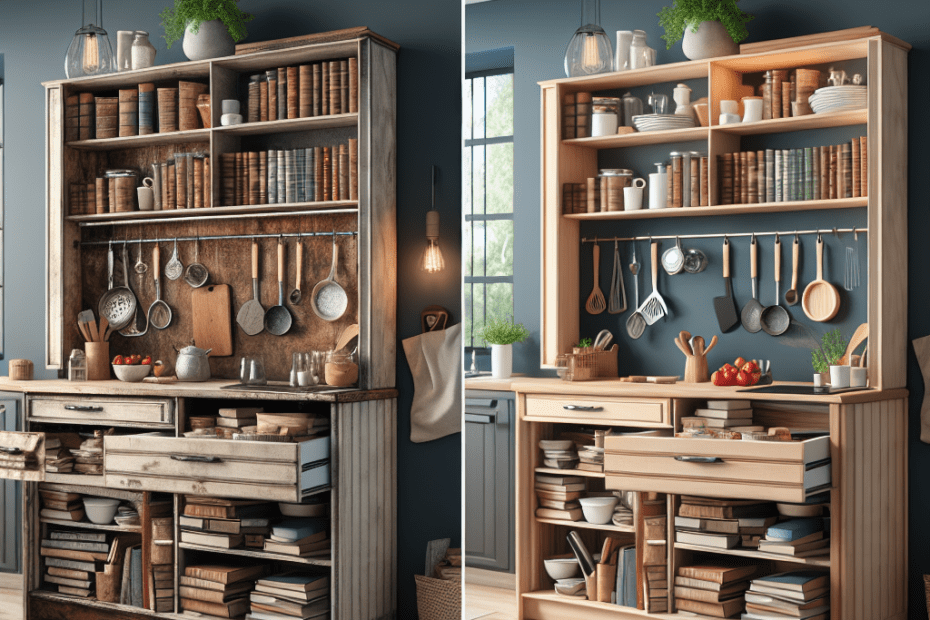“`html
Introduction
In recent years, many people have embraced the concept of upcycling, giving new life to old and unused objects. A popular project in this trend involves transforming an old bookshelf into a kitchen island. This inventive idea not only adds functionality to the kitchen but also promotes sustainability. Additionally, upcycling can result in unique pieces of furniture that serve as conversation starters in any home. In this blog post, they will explore the steps involved in creating an upcycled bookshelf kitchen island, discuss key statistics on the environmental benefits of upcycling, and provide a section for frequently asked questions.
Steps to Create an Upcycled Bookshelf Kitchen Island
1. Assess the Bookshelf
First, they must evaluate the bookshelf. It must be sturdy enough to withstand daily use as a kitchen island. Check for any damage or weak points that need repair.
2. Gather Materials
Some materials they may need include sandpaper, paint or wood stain, a strong wood adhesive, screws, and caster wheels if they want the island to be mobile. A butcher block or a piece of sturdy wood for the top surface is also essential.
3. Design the Island
They should decide on the design and functionality of their kitchen island. Do they need additional shelves, hooks, or a towel bar? Consider these features before construction begins.
4. Prepare the Bookshelf
To prepare the bookshelf, they will want to sand it down, removing any old varnish or paint. If adding a new color, apply primer first for better paint adhesion.
5. Assemble the Top Surface
Attach the butcher block or wooden countertop to the top of the bookshelf. Use wood adhesive and screws to ensure it is securely fastened.
6. Finishing Touches
They can now paint or stain the entire unit to match their kitchen decor. Consider adding caster wheels for mobility, especially if they have a small kitchen space. It is also the time to attach any additional features like hooks or a towel bar.
Environmental Benefits of Upcycling
Statistics show that upcycling is a growing trend with significant environmental impacts. According to a study by the Environmental Protection Agency (EPA), Americans generate about 292.4 million tons of trash annually. By transforming unused items like old bookshelves, they reduce the waste sent to landfills, promoting sustainability and environmental conservation.
| Year | Total Municipal Waste (Million Tons) | Percentage Recycled |
|---|---|---|
| 2010 | 250 | 34.1% |
| 2020 | 292.4 | 32% |
The table above illustrates how waste production has increased over the years. However, recycling rates have either stagnated or declined. Upcycling projects serve as a creative solution to counter this trend, reducing environmental footprints.
Key Takeaways
- Upcycling an old bookshelf into a kitchen island is a creative and sustainable project.
- Materials needed include sandpaper, paint, wood adhesive, screws, and a butcher block.
- Customized features, such as caster wheels and hooks, enhance functionality.
- Upcycling helps reduce landfill waste and promotes environmental sustainability.
FAQs
- What size bookshelf should they use for a kitchen island?
They should choose a bookshelf that fits the available kitchen space, typically one that is waist-high and not too wide. - Do they need to paint the entire bookshelf?
It is recommended to paint or stain the entire bookshelf for a more uniform appearance and to protect the wood. - What type of wood is best for the countertop?
A durable wood like oak or maple is ideal for a countertop as it withstands wear and tear. - Can they add wheels to make the island mobile?
Yes, adding caster wheels can make the island mobile, allowing for flexibility in kitchen arrangement. - How long does this project usually take?
The project can take a weekend to complete, depending on the condition of the shelf and the complexity of the design.
“`
This guide provides clear instructions and insights into the upcycling process while tapping into the environmental benefits of upcycled projects. The inclusion of FAQs helps address common concerns, enhancing the reader’s understanding and encouraging them to start their own upcycled bookshelf kitchen island project.
